Croatian Food Prices Increase by Three Percent in Just One Month
February the 27th, 2022 - There has been a concerning three percent increase for Croatian food prices, which also regards certain drinks, in the space of just one single month. What's going to unfold as this situation continues is worrying for many.
As Novac/Jutarnji/Marina Klepo writes, back in January 2022, inflation accelerated further, to 5.7 percent when compared to the same month last year, while it was 0.3 percent on a monthly basis, according to the CBS. As such, the December (2021) record of 5.5 percent was exceeded and inflation reached its highest levels in Croatia since way back in October 2008. As was the case in previous months, the rise in prices is led by energy and food.
Pressure on Croatian food prices began back in the middle of last year due to developments on global markets, and partly due to unfavourable conditions here on the domestic market. In January, food and non-alcoholic beverages were as much as 9.4 percent more expensive than they were a year ago, and in just one month, prices jumped by 2.9 percent.
As food makes up a quarter of the average Croatian consumer basket, its impact on the overall level of inflation is also significant - amounting to 2.44 percent. Accelerated growth of energy prices continued, meaning that transport, which is primarily related to fuel, recorded double-digit annual growth of 10.8 percent, with a contribution to inflation growth of 1.59 percent.
In third place is the category of furniture and home furnishings with an annual growth of five percent and a monthly growth of 1.3 percent. Prices in Croatian restaurants and hotels, on the other hand, were 4.7 percent higher back in January and 0.4 percent higher than they were in the previous month of December.
According to the harmonised consumer price index used by Eurostat, inflation here in the Republic of Croatia back in January stood at 5.5 percent. At the same time, the average for the Eurozone was 5.1 percent, and for the European Union (EU) stood at 5.6 percent. The highest inflation rates are still being recorded in the Baltic countries: Lithuania with 12.3 and Estonia with 11 percent. The lowest price growth, on the other hand, has been seen France, 3.3 percent, and in Portugal, 3.4 percent.
In order to mitigate the impact of inflation on the cost of living, the government again administratively capped the country's fuel prices in early February, and then adopted a comprehensive package of measures worth 4.8 billion kuna, which will apply from the 1st of April. All hopes were that this rapid inflation would be temporary, that prices would slow down in the second half of the year, but Russia's invasion of Ukraine throws a spanner in the works of all previous forecasts.
"Although price growth is limited by government decisions and administrative restrictions on fuel prices, given recent events in Ukraine and the escalation of the conflict, our projections for this year are exposed primarily to rising risks," said RBA analysts, who expect an average consumer price growth rate in 2022 of 3.1 percent.
However, the Croatian National Bank (CNB/HNB) has previously warned that inflation could reach 4.5 to five percent this year. As things stand, that assessment could also undergo corrections. Initial estimates by global think tanks suggest that the key effects of the war in Eastern Europe will be higher inflation and slower economic growth.
If oil prices rise to $130 a barrel in the next few weeks and European gas prices to 180 euros per cubic metre, the contribution of energy to average headline inflation could increase, instead of falling gradually as was generally previously assumed. In addition to energy, rising Croatian food prices also seem inevitable, albeit with less of an impact on overall inflation, given that Russia and Ukraine export 25 to 30 percent of the world's wheat, and Ukraine is also a major exporter of corn.
As such, in the coming months, during the second quarter, it is estimated that in developed economies, the inflation rate could be at least a fifth higher than previously calculated and exceed six percent. However, according to Global Economics analysts, inflation should fall once again later in the year, partly due to base effects, but average inflation levels in developed economies, they estimate, could stay at around four percent by the end of the year.
For more on inflation and increasing Croatian food prices, check out our lifestyle section.
Retiring in Croatia as a Non-EU National: A Cost-of-Living Comparison
26 February 2022 - In addition to its beautiful architecture and stunning landscape, a key draw for retirees looking to relocate to Croatia’s shores is a lower cost of living, especially for those coming from non-EU countries like the United Kingdom (UK) and America.
So far, we’ve discussed how to relocate to Croatia, and the cost of both public and private healthcare. Today, I present one of the more everyday aspects of the cost of living for retirees by examining the average prices of groceries.
I also draw comparisons across the top 3 most populated cities in Croatia, the UK, America, Canada, Australia.
- United States: New York, LA, Austin
- Australia: Melbourne, Sydney, Brisbane
- Canada: Toronto, Montreal, Calgary
- Croatia: Zagreb, Split, Rijeka
- UK: London, Birmingham, Glasgow
According to the Croatian Bureau of Statistics (DZS), over the last 5 years, these countries represent a significant proportion of non-EU citizens that choose to live out their retirement in Croatia.
Here’s a quick overview of the results:
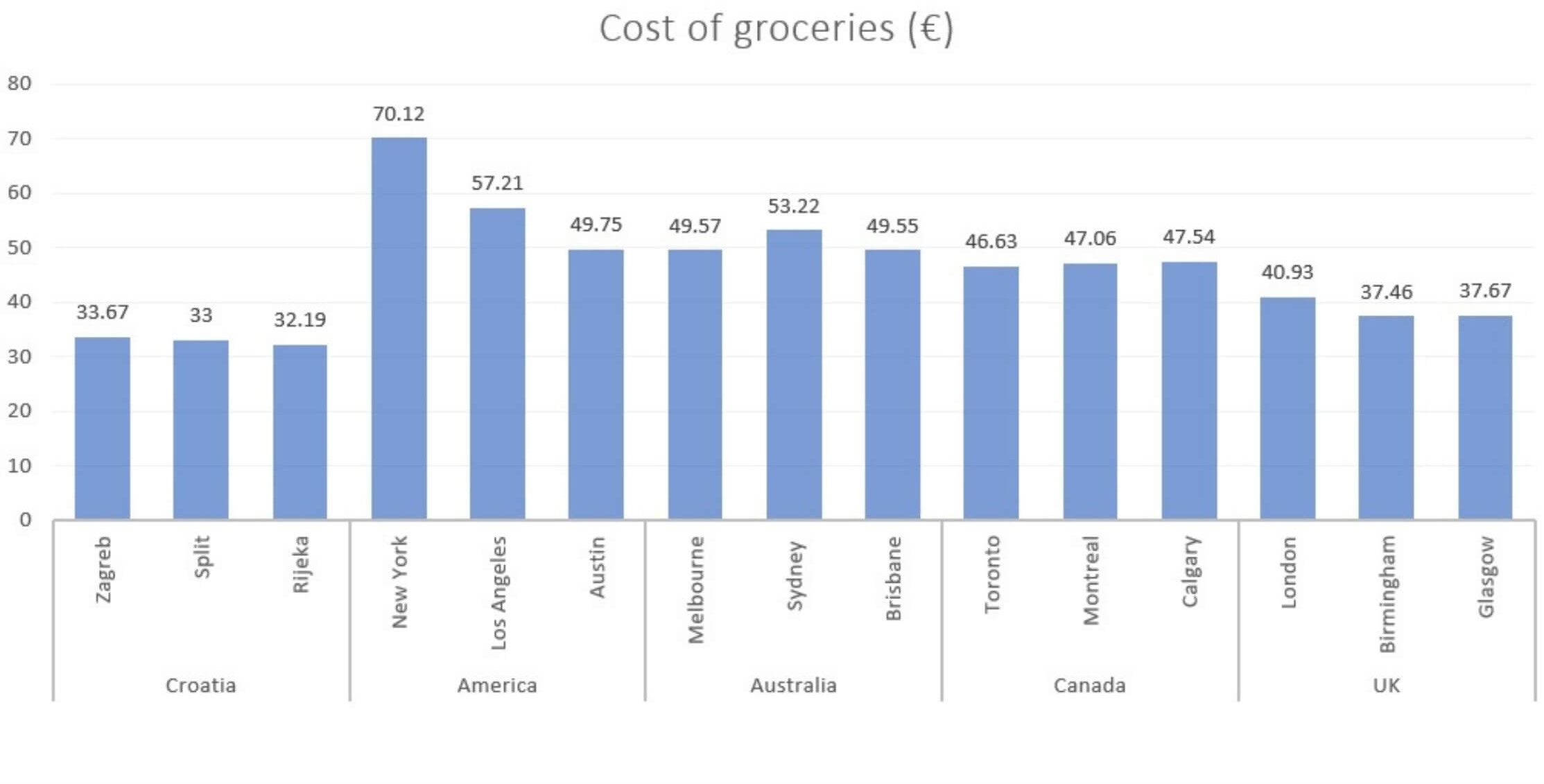
A couple of brief notes before we do a deeper dive into these figures.
Unlike the other 4 countries, produce you find in farmers' markets or even major supermarkets in Croatia (e.g. Konzum, Ribola) tend to be more seasonal. Generally, you will be able to find year-round items such as apples, bananas, and cucumbers, other items such as beets and watermelon tend to be stocked only when they are in season, though this trend is quickly changing with the rapid rise of tourism.
The listed items also reflect a sample of groceries that a household might purchase, they are not recommendations about how much you should spend or what you should be spending it on. Food spending varies from one household to another based on a multitude of factors like income, the type of food you buy, and other factors.
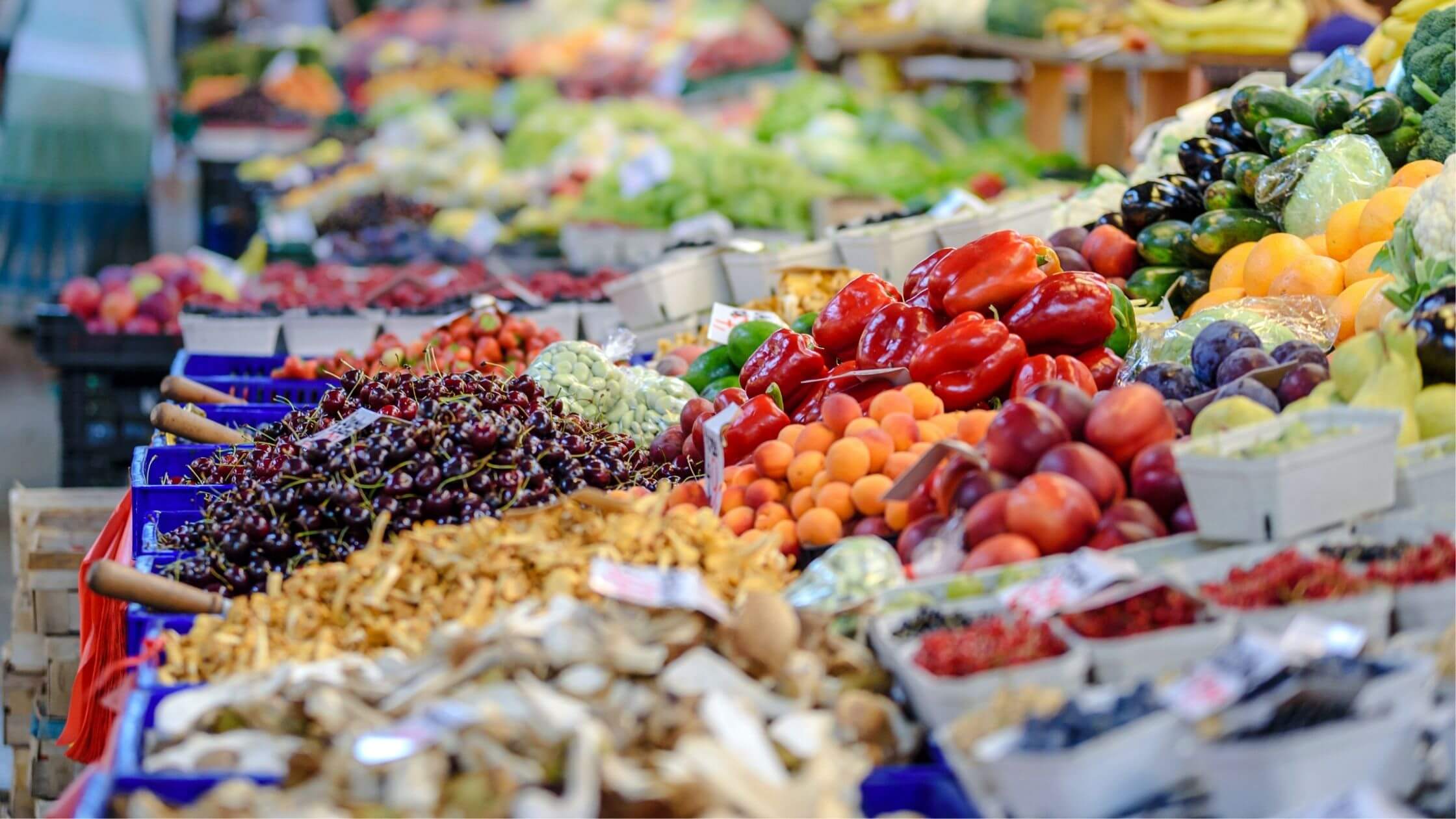
Image: Pexels.
Relative costs of grocery spend
While grocery prices in Croatia are indeed cheaper, wages in Croatia are also significantly lower than in these comparative countries on the list. The average monthly wage of a Croatian employee before taxes stands at €1,265 as of 2021, compared to €5,643 in New York.
Thus, with this sample grocery trip, a Croatian living in Zagreb spends an average of 2.67% of their income, compared to 1.24% for a New Yorker. In Calgary, the average pre-tax monthly income is €3,257 and this grocery trip cost 1.46% of that income, while in Birmingham, where average monthly wages are €2,232, these groceries make up 1.68%.
This means that the relative cost of groceries for a Croatian employee is significantly higher compared to these countries due to wage disparities.
Food trends during the pandemic
Finally, the COVID pandemic requires the acknowledgment of two key trends that impacted household grocery spending between 2020-2022, which are not accurately reflected in this sample.
The first is that food at home expenditures (e.g., grocery spending) rose during this time, while food away from home expenditures decreased due to lockdowns and mandates such as work from home. Second, global Consumer Price Indexes reflect a dramatic increase in household inflation due to supply chain disruptions, poor growing conditions, and overall economic uncertainty.

Image: Pexels.
In the years 2021-2022, the UK Office for National Statistics reports that food prices are up 4.5%. In North America, the Bureau of Labor Statistics highlights that grocery prices are up 7.4%, while Statistics Canada shows that consumers are paying 5.7% more for food. Australia appears to be bucking this trend and although the Australian Bureau of Statistics reports consumer prices have risen by 3.5%, prices for food and non-alcoholic beverages increased by a modest 1.9%.
Croatia saw a vast 9.4% increase in food and non-alcoholic beverages. However, this remains on par with other EU countries such as the Czech Republic which saw a jump of 8.8%, and Estonia with an 11% increase in food prices.
Grocery prices
Now let’s delve into the cost of groceries starting with the 3 most populated cities in Croatia. All estimates were taken from the average prices at Numeo and Price World.
Croatia
In terms of food production, the World Bank highlights that Croatia is self-sufficient in the production of wheat, corn, poultry, eggs, seafood, and wine, but a big importer of pork, beef, and surprisingly, pet food.
The first pet food manufacturing plant was only established in 2019 in Virovitica, to capture part of the €118.5 million pet food market which is now dominated by German and Italian facilities.
1€ = 7.54 hrk
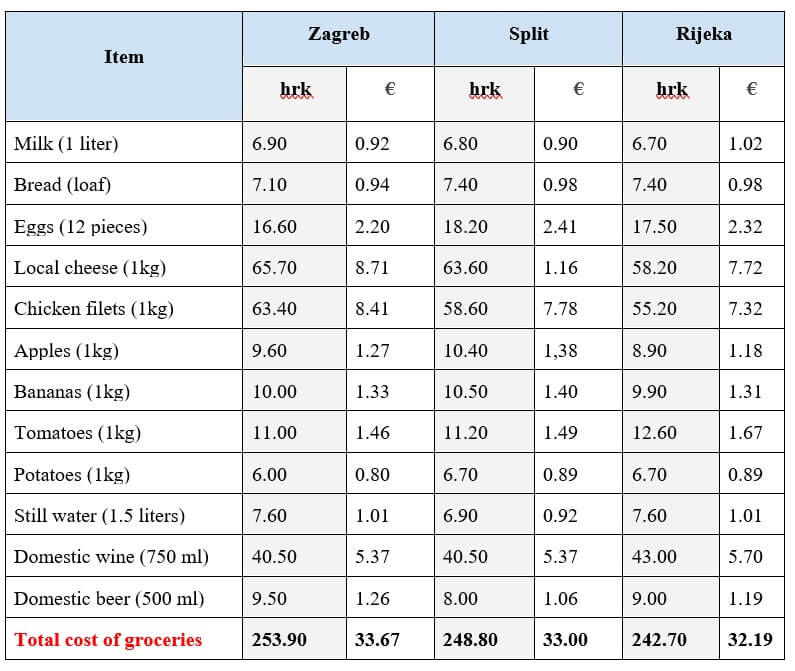
United States

Brooklyn bridge, New York. Image: Pexels.
In 2021, meat and fish prices rose most sharply with beef and veal prices increasing by 9.3%, pork by 8.6%, and fish and seafood prices by 5.4%. With these increases, Customer Expenditure Surveys by the Bureau of Labor and Statistics show that the average grocery spend per month for a household (between 1-3 people) is: $401.75/€53 in New York, $378.59/€04 in LA and $393.75/€45 for Houston
(1€ = USD$1.13)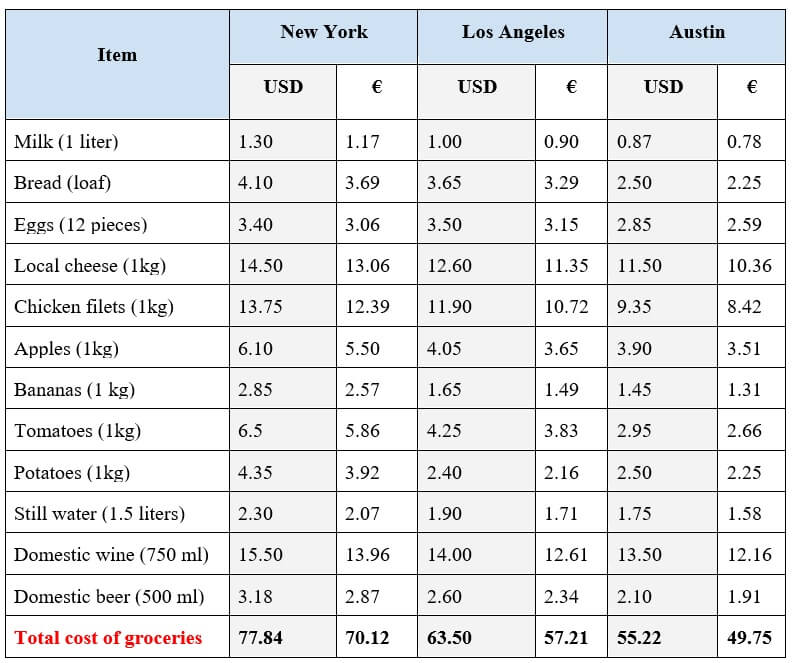
UK
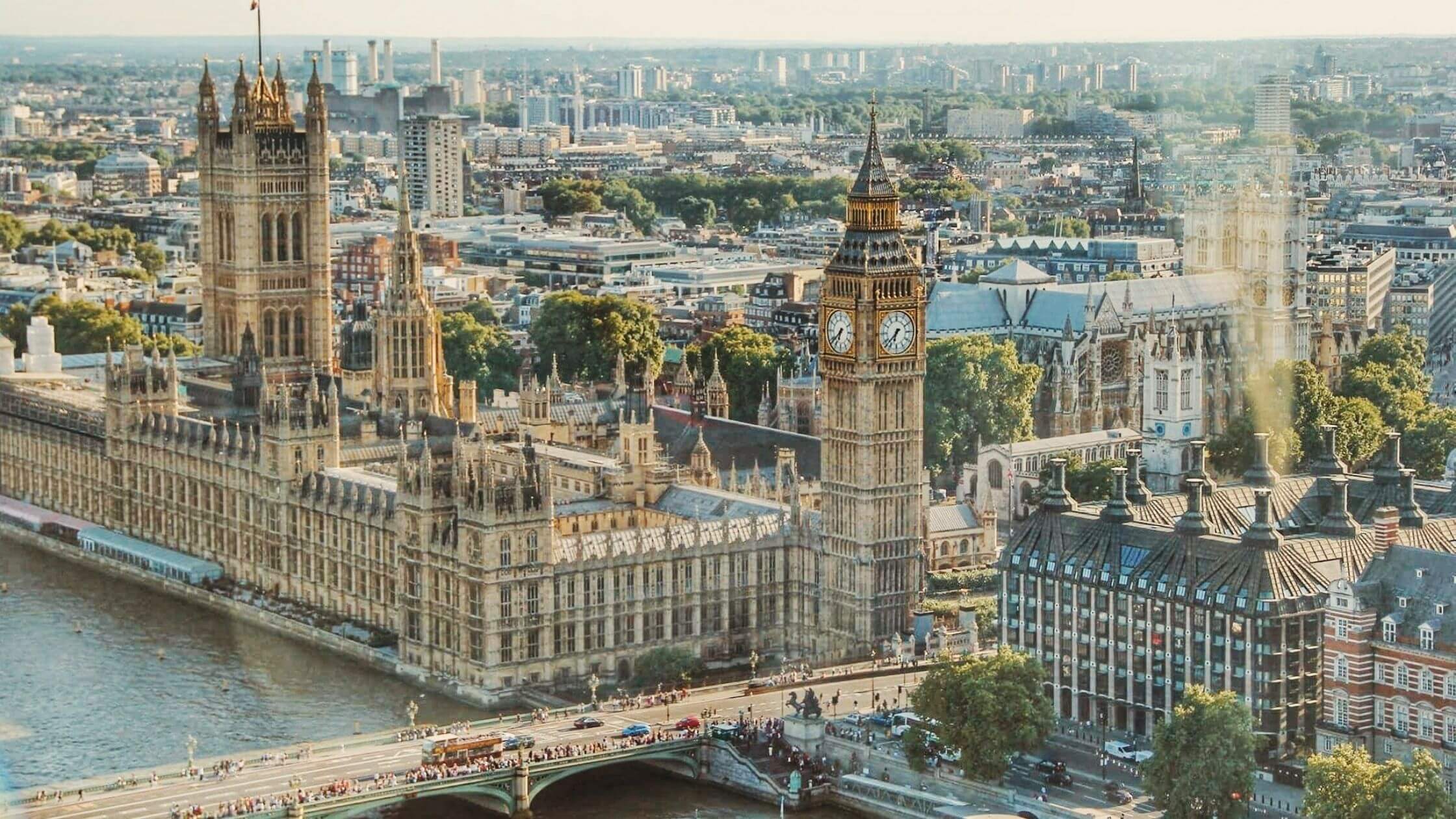
London, United Kingdom. Image: Pexels.
The Office for National Statistics revealed that the average food cost for a 2 member adult UK household in 2020 was £228/month (€261) or £57 (€65.55) weekly. In the past year, prices for fresh or frozen beef have risen 13%, while poultry is now 9.0% higher. Oils and condiments such as margarine and butter are also up between 12-16% over this time.
(1€ = £0.84)
Canada

The CN Tower, Toronto. Image: Pexels.
The 2022 Canada’s Food Price Report predicts the average grocery bill for a family of 2 this year will amount to $7690.35 (€5,378) annually. This translates into $640.86 (€448.15) per month or $160 (€111.90) per week.
A significant increase in prices by 5-7% is also expected to affect dairy, vegetables, and bakery products this year.
(1€ = CAD$1.43)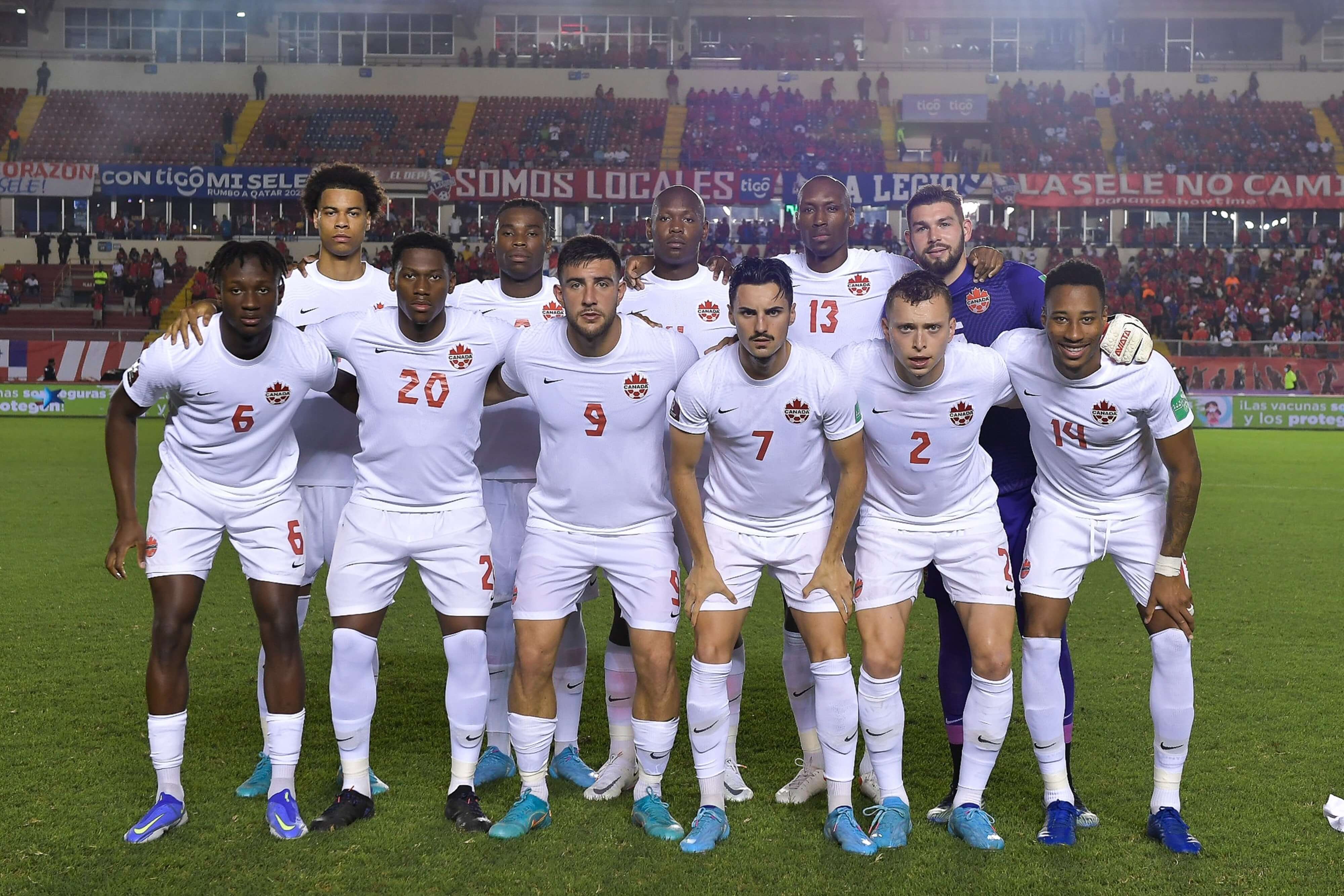 Australia
Australia
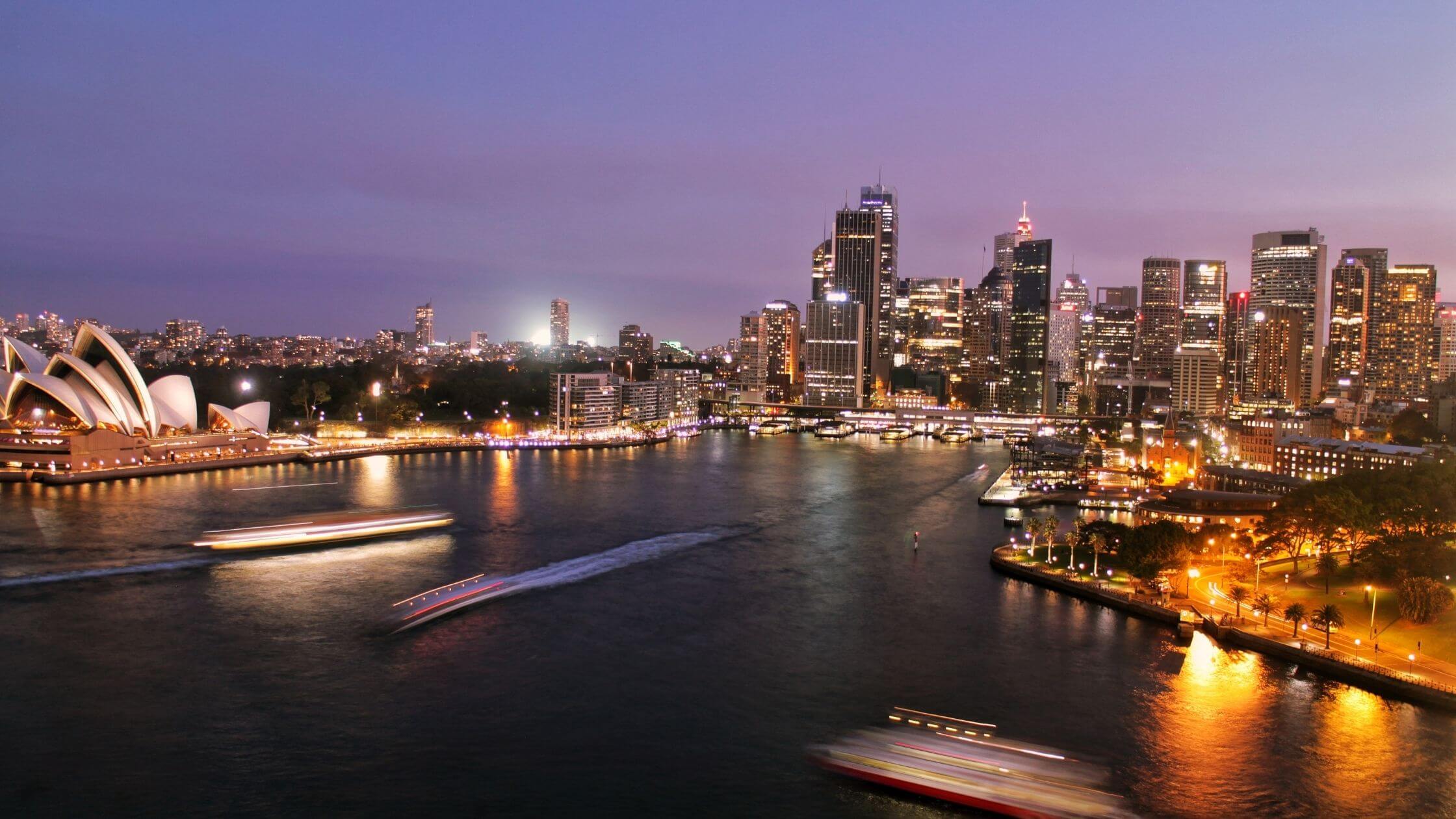
Sydney Opera House. Image: Pexels.
In Australia, statistics show that between 2020-2021, the CPI rose by 3.5%. Specifically, Sydney saw a 3.1% increase in consumer prices, while Brisbane and Melbourne stood at 4.3% and 2.5% respectively. Price increases were mainly driven by dairy and related products which saw a rise of 1.7%, but this was offset by a reduction in prices of fruit by 1.2% due to favorable growing conditions.
A SunCorp report revealed that the average spend per week for groceries for a single individual amounted to $135 (€86.54), or $270 (€173.08) for a couple.
(1€ = AUD$1.56) While this merely scratches the surface of how to manage your retirement income, hopefully, it has shed some light on what the cost of everyday groceries is like in Croatia compared to where you may be living right now.
While this merely scratches the surface of how to manage your retirement income, hopefully, it has shed some light on what the cost of everyday groceries is like in Croatia compared to where you may be living right now.
For more, check out our lifestyle section.
Croatian Government Unveils €640 Million Support Package to Cushion Energy Price Rises
ZAGREB, 16 Feb 2022 - The Croatian government on Wednesday launched an HRK 4.8 billion (€640 million) package of measures aimed at shielding consumers from rising energy prices.
The package includes the capping of the growth of electricity prices to 9.6% and the growth in prices of gas to 20%.
Furthermore, the Value Added Tax (VAT) rate on gas supplies and some agricultural products will be lowered.
The package also provides a rebate on domestic energy bills.
Unveiling the set of measures, Prime Minister Andrej Plenković said today that the package had been prepared in a systematic manner, and is "timely and all-encompassing".
The package contains the measures targeting households, businesses and agricultural producers, Plenković said adding that the state-run Croatian power provider HEP will also bear a part of the burden to address the rising electricity prices.
The measures encompass tax reduction, subsidies for citizens at risk of energy poverty, and one-off discounts on energy bills for pension recipients, while businesses, farms and fisheries will be entitled to subsidies to cope with the rising energy costs.
Cap for electricity paid to make HRK 460 million disposable to households
The caps on the rise in prices of electricity will make HRK 460 million disposable to households.
The subsidies for households using gas will include HRK 0.10 per kilowatt-hour.
The support will be provided to micro businesses and SMEs with the average annual consumption of gas up to 10 gigawatt-hour, and the discount will be HRK 0.15 per kWh.
The VAT rate on gas and heating energy will be lowered from 25% to 13%, the same VAT already applied on power. The lower VAT is a permanent measure.
VAT will additionally be reduced to 5% on gas as a temporary measure, in place from 1 April 2022 to 31 March 2023.
VAT to be reduced on some food in bid to tackle rising cost of living for households
The VAT rates of 13% will be reduced to 5% for fresh meat, fish, eggs, fruits, vegetables, cooking oils, and baby food and the the standard 25% VAT rate will be slashed to 5% on some items in the agricultural production (fertilisers, plants etc.).
The package aimed at tackling rising costs of living also includes the reduction of the 25% VAT to 13% on feminine hygiene products, such as tampons and sanitary towels.
The coupons for electricity bills for senior citizens at risk of poverty will increase from 200 to 400 kuna a month and will now also be applicable to gas bills.
Pensioners whose monthly income is up to HRK 4,000 will be also entitled to payments between HRK 400 and 1,200 under the the energy support scheme.
(€1 = HRK 7.523717)
For more, check out our politics and lifestyle section.
Prime Minister Announces Package of Measures to Mitigate Impact on Living Standards
ZAGREB, 9 Feb (Hina) - Prime Minister Andrej Plenković on Wednesday announced on Twitter that the government would mitigate the impact on the citizens' standard of living with a strong package of measures given the increase in energy prices, adding that talks on support were also under way with businesses.
"We are talking with the leaders of the Croatian Employers' Association (HUP), the Croatian Chamber of Commerce (HGK) and the Croatian Chamber of Trades and Crafts (HOK) about Croatia's economic recovery, the price increase and support for business people in the challenges we are facing. The Croatian government will mitigate the impact on the citizens' standard of living with a strong package of measures due to the increase in energy prices," the prime minister wrote on Twitter.
Due to an imminent increase in the prices of gas and electricity as of 1 April, Prime Minister Plenković had earlier announced that in order to alleviate the effect of the increase of energy prices on citizens, the government would act in three segments -- social transfers, gas and electricity pricing and VAT rates.
Economy and Sustainable Development Minister Tomislav Ćorić earlier announced that the government would present its measures to mitigate the increase in energy prices in February.
In the meantime, the government on Monday issued a decree capping the prices of petroleum products, limiting the price of Eurosuper 95 to HRK 11.37 per litre, Eurodiesel to HRK 11.29 and Eurodiesel BS blue to HRK 6.5 per litre, VAT included. The prices will be valid for a maximum of 30 days.
For more, check out our dedicated politics section.
Croatian Chamber of Agriculture: Price of Raw Milk Should Head Towards HRK 3.5
ZAGREB, 9 February 2022 - The Croatian Chamber of Agriculture (HPK) on Wednesday once again warned that the price of raw milk is untenable, and that its price should head towards HRK 3.5 with VAT because its price is rising much faster in the European Union than in Croatia.
HPK participated at a meeting of the CDG Milk (Civil dialogue group on milk) on Tuesday where they discussed the situation and trends surrounding the price of raw milk in the EU, chairman of the Milk Committee at HKP Igor Rešetar said.
"We saw that in countries Croatia imports milk from the most, the price of fresh milk has increased on average by 8-12% in the past year, while the price in Croatia remained the same throughout 2021," said Rešetar.
Croatia has one of the lowest raw milk price rises, yet despite all the problems last year, 428,700 tonnes of milk were delivered, which is 1.3% less than the year before. The number of dairy farmers has fallen by 500 and Croatia now has only 3,500, HPK underscored.
"The price of raw milk should be heading towards HRK 3.5 with VAT, which is the price that farmers in Italy, Austria and Poland have," said Rešetar.
Despite the Ministry of Agriculture's attempts to support the milk industry, HPK warned that the current situation is unsustainable and that further collapse could become dramatic. Croatia could be one of the rare countries left without local dairy farms.
HPK noted that milk production in Croatia is constantly on the decline. In 2015, 513,400 tonnes of milk was delivered compared to 434,200 tonnes in 2020. The situation in Slovenia is almost unchanged whereas in Serbia, it is increasing from 861,800 tonnes in 2015, to 907,700 tonnes in 2020.
For more, check out our lifestyle section.
Croatian Prices: Bread, Baked Goods Cost More in Croatia Than Germany
Croatian prices are sometimes baffling for many people given the average wage level in the country, and some items are inexplicably more expensive than they are in more developed EU countries.
As Poslovni Dnevnik writes on the 26th of August, 2020, the prices of bread and cereals in Croatia are about two percent above the European average, and at these prices, the country is a record holder among transition countries, Eurostat announced based on the movement of prices of bread and cereals throughout the year 2019.
Slovenia is right next to Croatia in that sense. In the Czech Republic, bread and cereals are 80 percent cheaper than they are in regard to the EU average, ie a fifth cheaper than in Croatia, in Hungary, bread and cereals are a quarter cheaper, in Slovakia they're 10 percent cheaper, in Bulgaria they're cheaper by a third, and in Romania they're 50 percent cheaper.
Although it isn't a member of the European Union, prices in Norway are 60 percent above the EU average, however, so are average Norwegian salaries, and Germany's bread and cereals are about one percent cheaper than they are here in Croatia.
The bakery industry, ie the production of bread, fresh pastries, confectionery and cakes, annually generates between 4.5 and 5 billion kuna in revenue in Croatia and employs about 16 thousand workers.
When asked why bakery products are expensive in Croatia, both traders and bakers will immediately discuss the high cost of various boxes that must be ticked for the state, while a more honest answer could be - because they can be. On average, Croats eat only 4.5 kilograms of fish a year, but each member of a typical household eats an average of 55 kilograms of bread and pastries on an annual basis.
For comparison, the price of meat in Croatia is 17 percent lower than the average price in the EU, fruits and vegetables are about 11 percent lover, and milk, cheese and eggs are only 5 percent cheaper than the average price in the EU. Croatian prices for food are generally 6.5 percent lower while oils and fats are about 7 percent more expensive than the bloc's average.
In the past year alone, bread and cereals have risen in price by an average of 1.1 percent, which deviated from the movement of prices of other products. Prices of goods and services for personal consumption measured by the consumer price index, after a modest increase in June (+ 0.1 percent), fell by 0.5 percent on a monthly basis in July.
At the annual level, there was also a decrease in April in a row by 0.3 percent. In the period from January to July, average consumer prices were up 0.4 percent when compared to the same period in 2019. Observed by groups and by the purpose of consumption, the largest generator of the fall in consumer prices on a monthly basis by 9.5 percent are seasonal reductions in clothing and footwear.
Food and non-alcoholic beverages were on average 0.9 percent cheaper while the prices of household equipment and regular household maintenance were lower by 0.3 percent. In addition to the coronavirus crisis and reduced consumption, the fall in Croatian prices is also affected by crude oil, so fuels and lubricants are ten percent cheaper now when compared to the same period last year. Alcoholic beverages and tobacco with a share of 5.2 percent in the total structure of the domestic consumer basket increased at an annual rate of 4.5 percent, mainly due to increased excise duties on harmful products.
"By the end of the year, there should be a further decline in average consumer prices on an annual basis, so in the baseline scenario when compared to 2019, this year we should record stagnation in consumer prices," said RBA analysts, as was reported by Vecernji list.
For more on Croatian prices, follow our lifestyle section.
For the latest travel info, bookmark our main travel info article, which is updated daily.
Read the Croatian Travel Update in your language - now available in 24 languages


